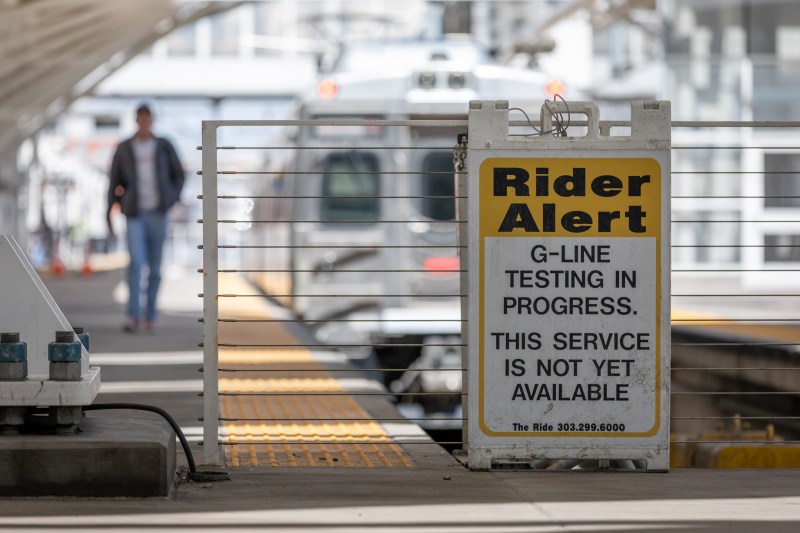The G-Line From Denver to Arvada and Wheat Ridge Will Finally Open April 26

The G-Line train from Denver Union Station to Arvada and Wheat Ridge will finally open April 26 after more than two years of delays.
The Regional Transportation District initially said the line would open in 2016. The agency also set a more recent opening date, for March 31, which passed yesterday. After so many broken promises, the agency emphasized that the announcement today was not an April Fool’s joke.
Like the University of Colorado A-Line, the G-Line uses a new positive train control system. Glitches in the system triggered crossing arms at imprecise times, which failed to meet federal safety standards. But federal approvals finally arrived late last week, said RTD’s General Manager and CEO Dave Genova at a press conference held this morning at the agency’s downtown Denver headquarters. He also thanked the public for enduring the wait.

“Thank you for your patience,” he said. “I know it’s been a rough road for all of our partners, certainly for us … and especially the public, who have been waiting for far too long.”
To celebrate the line’s grand opening, RTD will offer free rides on the 11.2-mile commuter line Friday, April, 26. On Saturday, there will be free service across the entire rail system, with parties at G-Line stations. Starting Sunday, the line will require a $3 local fare.
RTD is the first transit agency in the U.S. to install positive train control systems on new railroads, which the agency blames for the delays. The technology can boost safety by preventing trains from colliding or moving too fast.
“It will enhance the safety of our system,” Genova said.
While many have criticized the agency’s troubles with the technology, RTD has not installed it on light rail lines. If it had, the system might have prevented a light rail operator from going too fast on a curve in January, which caused a derailment that severely injured a passenger.

The G-Line passes through several residential communities, and its delayed launch required testing along the line to continue longer than expected. The testing involved human flaggers and loud horn blows at road crossings. When the line opens, automated crossing arms will take the place of flaggers and most of the horns will stop as quiet zones take effect.
G-Line service will operate from 4 a.m. to 12:30 a.m., with 15-minute frequency from 6 a.m. to 6:30 p.m. Just 9,000 passengers are expected to ride the $1.03 billion line its first year, with ridership projected to grow to 12,900 daily trips in 2035.
The G-Line is a part of FasTracks, the measure voters approved in 2004 to expand the region’s rail network. Denver Transit Partners, a private company, will operate the line.


